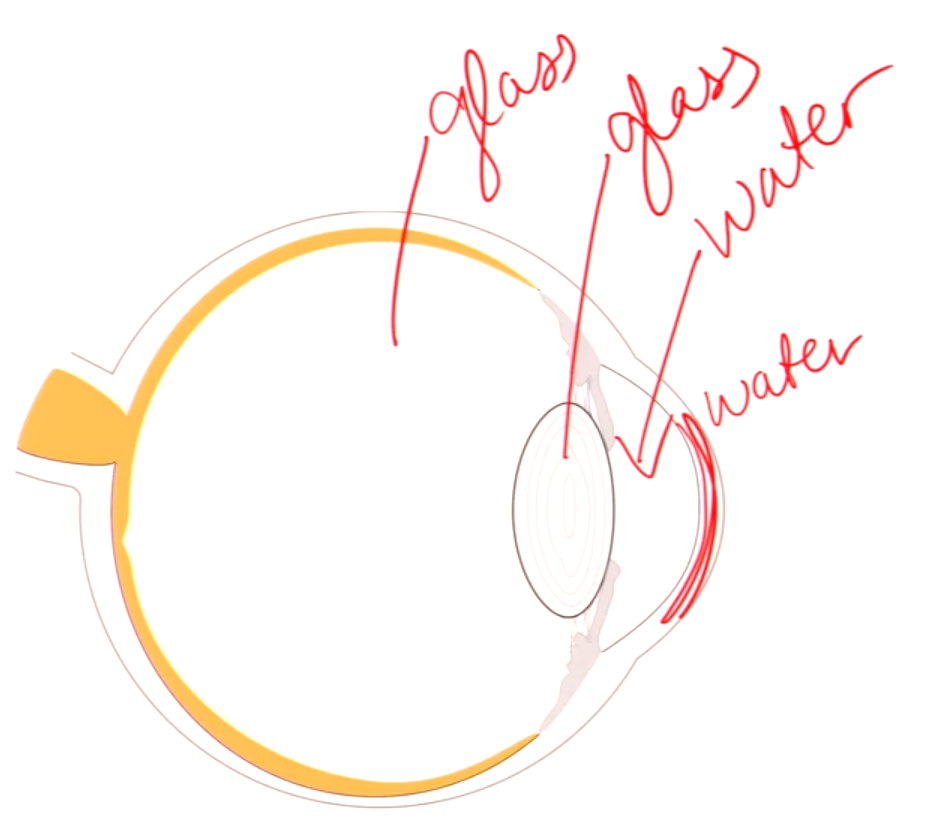Light’s Journey Through the Eye
Light entering the eye encounters several structures that alter its path:
-
Cornea: The transparent front layer of the eye. It has a refractive index similar to water, and plays a crucial role in focusing light. It acts like the coarse focus knob on a microscope, bending light rays significantly.
-
Aqueous Humor: A fluid-filled chamber behind the cornea. It has a watery consistency and a refractive index similar to water.
-
Lens: A flexible structure behind the aqueous humor. It has a refractive index similar to glass and acts like the fine focus knob on a microscope, making final adjustments to focus light precisely onto the retina.
-
Vitreous Humor: A jelly-like substance filling the main cavity of the eye. It also has a refractive index similar to glass.
Importance of Refractive Index:
 The refractive index of a material determines how much it bends light rays.
The refractive index of a material determines how much it bends light rays.
- Air: Refractive index of 1 (almost no bending)
- Cornea: Refractive index similar to water (significant bending)
- Lens: Refractive index similar to glass (additional bending)
By carefully adjusting the refractive index of the cornea and lens, the eye focuses light from distant objects onto the retina, creating a clear image. Without this adjustment, the world would appear blurry, similar to viewing an object underwater.
Focusing on Near Objects:
The lecture mentions that the current structure of the eye is optimized for focusing on distant objects. To focus on near objects, the eye employs a mechanism called accommodation which will be covered in a future lecture segment.